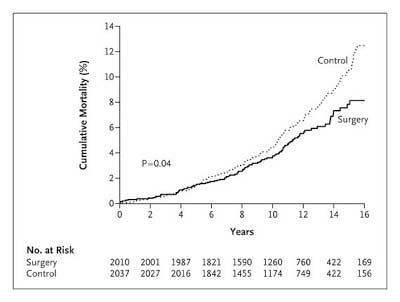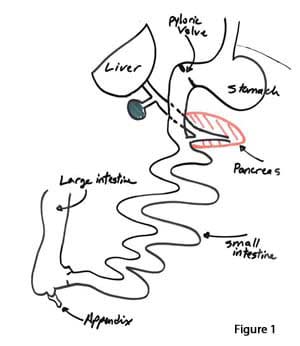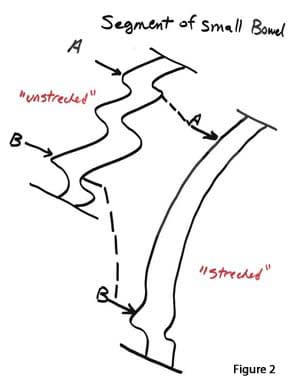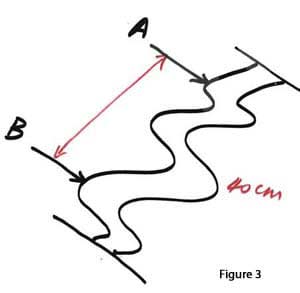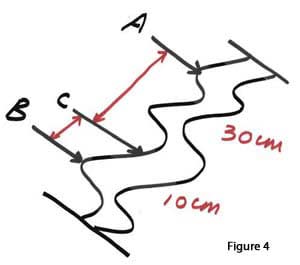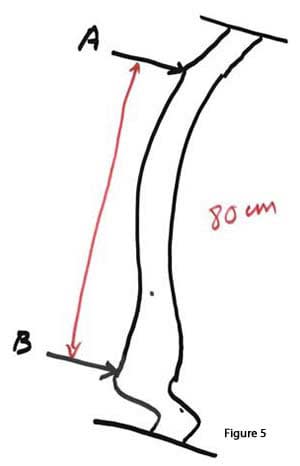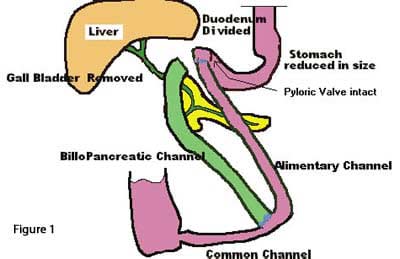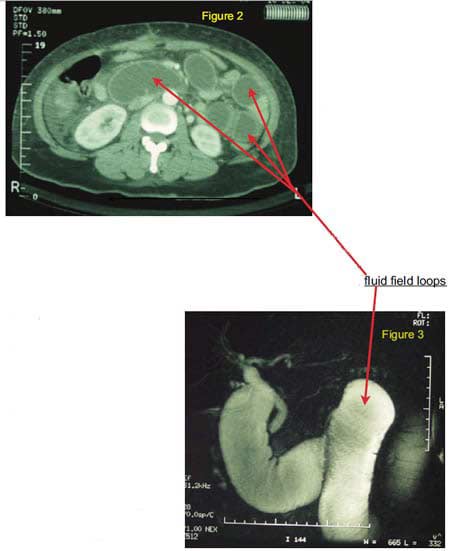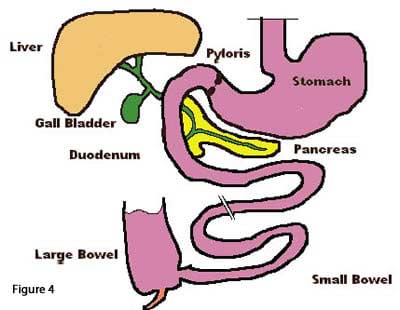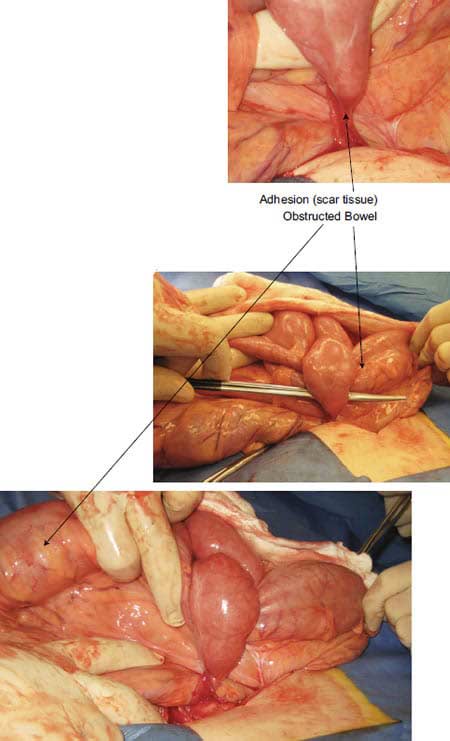Category: Uncategorized
Summary of Selected Presentations of ASMBS Meeting Part 1
August 13, 2010 10:30 am
Protein Intake Compliance of Morbidly Obese Patients Undergoing Laparoscopic Roux-en-Y Gastric Bypass and its Effect on Weight Loss, Leptin and Albumin.
Bariatric Center, Saint Francis Hospital and Medical Center, Hartford, CT; Pediatrics and Surgery, Saint Francis Hospital, Hartford, CT
Low daily protein intake (DPI) after laparoscopic Roux-en-Y Gastric Bypass (LRYGB) has been reported. This presentation discussed the DPI measurements after the LRYGB procedure and its effect on weight loss, leptin and albumin levels. Two hundred thirty LRYGB patients were taken into consideration for this study. There were 200 females with a mean age of 41 years old and an average BMI of 47 kg/m2. There was an apparent correlation of DPI with the lowest BMI after a year. However, in patients with a higher DPI after a year, there was a large leptin level drop and a greater BMI drop, determining no increase in serum albumin. As a result, higher DPI benefits weight loss and nutritional status a year after LRYGB surgery.
Editorial: The take home message is that the higher the protein intake the better the weight loss in gastric bypass patients. I am not aware of a similar study for Duodenal Switch patients but I would venture to guess that the parallel also applies to the Duodenal Switch patients.
Ara Keshishian, MD
Laparoscopic Sleeve Gastrectomy in Adolescents, Results in 51 Patients
Pontificia Universidad Catolica de Chile, Santiago, CHILE
It’s an unfortunate fact that such a majority of today’s adolescents develop obesity and develop multitude of medical and psychosocial problems. This particular research was done to investigate the observations and execution of the Laparoscopic sleeve gastrectomy (LSG). 50 patients were analyzed and studied from the beginning of 2006 till late 2009 examining % excess weight loss (%EWL) and the teenagers’ general happiness. Many of the cases werefemales averaging 18 years old with an approximated BMI of 36. Of these patients many were diagnosed with comorbidities. The LSG has proven to be a dependable and accomplishedsurgery resulting in 95% weight loss after a year and a half leaving 76% of patients with resolved co morbidities. Most importantly, this allowed the adolescents to have a better outlook on life and more self-esteem for themselves. The sleeve gastrectomy is proven to be a safe approach with favorable weight loss data along with an effective resolution of obesity.
Editorial: Note that the outcome data is only for 1.5 year. As with all weight loss surgical procedures it is very important to look at what happens to the patients long term over 5-10 year period and not over the short term. As one of the issues that was noted in a number of presentations, there is still no uniform baseline reporting in place. Different procedures all claim to be successful, yet when you look at the fine print some had a follow up of months and other years.
Ara Keshishian, MD
Interim Outcomes Report of Adjustable Gastric Banding In 402 Adolescents at a Single Center
Jacksonville Surgical Associates, Jacksonville, FL
Adolescent obesity is on the rise and is one of the major problems teens face today. The purpose of this study was to analyze the safety and success rate ofthe Lap band in America’s youth. Four hundred patients aged 10 to 20 years old were used in this case because they had the gastric band surgery performed. The study recorded complications, weight loss and demographics. The average BMI (3:1 ratio for women to men), was 43. The study also showed that there was a general reduction in associated comorbidities. In summary, adolescent adjustable gastric banding is effective at minimizing weight and keeping it off with a very low rate of drawbacks in the future. This information may later be used to initiate a weight loss program to reduce adolescent obesity.
Vitamin D Structure
July 30, 2010 10:41 pm
Walking out into the daylight we sometimes complain about the sun’s rays hit our eyes or burning our skin. Most people overlook the importance of the sun, for they are unaware of its benefits. Vitamin D is a natural resource produced from the ultraviolet light waves from the sun hitting our skin. As a result, this allows normal bone growth and development to take place. In addition, vitamin D can be found in various foods, such as seafood and milk. Also, vitamin D’s main function is to maintain consistent levels of calcium and phosphorus.
What are the major sources of vitamin D?
The major sources are food and exposure to sunlight. Important food sources are:
- Fortified foods with major dietary sources of vitamins and minerals. For example, Milk in the United States is reinforced with 10 micrograms (400 IU) of vitamin D per quart.
- Fatty fish and fish oils.
Exposure to sunlight is an important source of vitamin D as well. Ultraviolet (UV) rays from sunlight generate vitamin D composition in the skin. There is some evidence that the body can make 10,000 iu to 25,000 iu in a single short sun exposure if the sunlight is adequate and appropriate amount of skin is exposed.
What is Vitamin D’s function? Calcium and phosphorus are two vital minerals which are constantly controlled and conserved by vitamin D in our bodies. Calcium is responsible for managing our body’s bones and keeping them stable. In addition to keeping our bones healthy, phosphorus assists with keeping nerves and muscles working together efficiently. In many countries, such as Alaska where sunlight is scarce, many people develop skeletal deformities, or muscular vulnerability. Without vitamin D, bones can become brittle and soft, also known as rickets.
Lack of Vitamin D Minimal amount or deficiencies are major causes of rickets and osteomalacia. An absence of vitamin D develops when dietary intake is insufficient, little exposure to sunlight, the kidneys not modifying it to its active form, or when the individual isn’t capable of absorbing vitamin D from the gastrointestinal tract. In addition, Americans over the age of 50 may be at risk of deficiency because the ability of skin to manipulate vitamin D into its active form slows as we grow older. As a result of various diseases the reduction of a person’s ability to absorb dietary fat decreases. Also, the kidneys which convert vitamin D to its malleable form decrease in efficiency as well. This is a brief over view of the many functions and uses of this important vitamin. Over the last few years there has been a wealth of information that has been published.
Excess Vitamin D Too much vitamin D can cause nausea, vomiting, poor appetite, constipation, weakness in fatigue, pain in the bones and weight loss. Also, vitamin D stimulates the formation of kidney stones, stiffening of soft tissue, and rise in blood levels of calcium. It is however realize that being that vitamin D is a fat soluble vitamin, it is very hard, if not impossible to get excessive amount of calcium after Duodenal switch operation. In order to avoid this very rare complication, patients on Vitamin D supplements should have their Vitamin D 25-OH levels check regularly.
Difference between D2 and D3 Vitamin D is present in two forms, cholecalciferol (D3) and Ergocalciferol (D2). D2 is manufactured by plants or fungus. D3 is formed by the body as a result of sunlight exposure and to some degree by animal products. Other differences about them is that D3 has a longer shelf life, and D2 can be toxic in most patient at high doses. Most of the beneficial effects of the Vitamin D have been contributed to D3. Further discussion here.
Questions that were posted on the obesity help website
January 25, 2010 4:33 am
Obesity Help Questions:
Here are several explanations to a question that were posted on the obesity help website:
The Swedish Obese subject group of studies (SOS studies) have been looking at a lot of the questions that are raised.
 1.) Diet and exercise in relation to weight loss surgery. The study found weight loss surgical procedures far more superior to the conventional diet and exercise plans. Their original data offered a relationship between the nonsurgical method and the RNY gastric bypass, VBG, and banding procedures. The long-term outcomes in 15 years of data were plotted and it is significant that the control (the nonsurgical group) had no sustained weight loss.
1.) Diet and exercise in relation to weight loss surgery. The study found weight loss surgical procedures far more superior to the conventional diet and exercise plans. Their original data offered a relationship between the nonsurgical method and the RNY gastric bypass, VBG, and banding procedures. The long-term outcomes in 15 years of data were plotted and it is significant that the control (the nonsurgical group) had no sustained weight loss.
2.) The follow-up question was asked to find if there are any life-extending benefits to weight loss surgical procedures. This is a question that has only recently been answered, since it takes time to know if patients who have had weight loss surgery live longer or not. The published data in NEJM in 2007 by the SOS group answered this same specific question.
Ara Keshishian, MD, FACS, FASMBS
The graphs are from https://content.nejm.org/cgi/content/full/357/8/741
Length of Small Bowel
October 26, 2009 2:49 am
It appears that there are series of questions and concerns that are not completely resolved, and they resurface every so frequently. Length of the small bowel for the Common Channel and the Alimentary limb in the Duodenal Switch operation is one of those topics.
The Questions that I am asked:
- How long is my common Channel?
- Another patient had the same length, but they are loosing more (or less) as the case may be.
- I was told by another surgeon that they would give me a certain length of common channel, what do you think?
The common problem is that there is no accurate and practical way to measure the length of the bowel. There is also two schools of though, with very little objective research to support one or the other. There is no published data that I could find that answers this question head on. There are number of other
articles, and presentations that touch on this topic.
The best reference that I think is worth looking over is an editorial by Dr. Hess. The link is provided below.
I would like to discuss this in an organized way.
The artistic work is done by yours truly!
First a Brief over view of our GI track:
Our GI track starts at the mouth and ends in the rectum (figure 1). It is a long tube that has a very few side branches. These include the opening of the salivary glands in the mouth, the opening of the biliary (from the liver) and the pancreatic (from the pancreas) plumbing to in the first part of the small bowel
(duodenum) and the Appendix (at the junction of the small bowel and the large bowel).
Related article is available on our site.
The small bowel is the part that causes all this confusion. The small bowel is a long pliable, elastic tube that can be stretched (figure 2).
Depending on how much force is applied to it, it can be of different lengths. A similar analogy is the phone cord to head set of a conventional phone. The spiral cord placed on a table will coil up to a certain length. If one then pulls on two ends it will measure longer. And if more pull is exerted, then it will easure even longer. This demonstrates that the absolute measured length of the small bowel, is directly related to the force with which it is pulled. What this means is that if two individuals measure the length of the headset cord, or the bowel, they will get two different lengths, both correct but not the same. The length is directly proportional to the pull force applied to both ends.
Furthermore; the length of the small bowel is determinant of the absorptive capacity (amongst other factors). The longer the small bowel the more absorption, and the shorter the small bowel, the less absorption. There is a general-trauma surgical problem knows as short gut syndrome, where the length of the bowel is so short that it cannot support maintenance of the electrolytes and minerals, in additions to the required absorption of the calories. Short gut syndrome is a very difficult surgical problem to solve.
Getting back to our discussion however, we can now appreciate how two
surgeons can measure the same amount of small bowel (the same absorptive capacity) but end of with different lengths of small bowel. Same amount of bowel, same absorptive capacity, different lengths. This is why comparing lengths of small bowel is probably not the most accurate way to. Two patients, both with 75 cm common channels may have very different absorptive capacity, unless the bowel was measured by the same surgeon, and both patients had the same amount of total bowel length. We should next consider a possible alternative. Consider the drawing on (figure 3) and (figure 4).
The distance between C and B is 25% (quarter) of the total length between A and B. This represents a segment of bowel that was measured and marked Now lets take the same amount of bowel and apply a little more pull force to the ends while measuring it. We will have a total length of 80 cm, between A and B (figure 5). The distance between A and C will be 60 cm and the distance between C and B will be 40 cm (figure 6). The absolute lengths then are double of the first case. Same amount of bowel, same absorptive capacity yet double the length. Does this mean that the second patient with distance between C and B at 20 cm will absorb twice as much as the first patient? The answer is no, since it was the same amount of bowel that was measured with different technique.
Lets now however look at this from another perspective. In both cases the distance between C and B was only 25% of the total length.
| Distances | Figures 3 & 4 | Figures 5 & 6 |
| Total length A-B | 40 cm | 80 cm |
| A-C | 30 cm | 60 cm |
| % of total | 25% | 25% |
The table above shows why lengths of bowel discussed in-terms of percentage of total may be a more standardized than the absolute numbers.
In this example both patient will have same absorptive capacity (25%) yet will have much longer absolute lengths. In our practice, we measure the total length and the common channel and the alimentary lengths are based on the patient BMI, comorbidities, age, sex, and activity level.
Please remember that this is only my opinion, different surgeons do it differently.
Bowel Obstruction From “scar” Tissue
October 12, 2009 7:52 pm
One of the potential complications of any abdominal surgery is bowel obstruction. This can occur with open or laparoscopic operation. It can also occur within days or years of the operation. The over all incidence of bowel obstruction is relatively low.
The text book diagnostic criteria for bowel obstruction is the presence of a set of physical findings additional to the diagnostic supporting evidence. A typical patient may present with cramping abdominal pain, nausea, vomiting, absence of any flatus, and not bowel movements. The pain may be dull and could be any where on the abdomen. The White count may be elevated, and a plain abdominal Xray may show “airfluid” levels. All of these finding point to a patient that has bowel obstruction. Depending on the age and the history of the patient, the a common cause may he adhesions (scar tissue) that has cause a blockage of the bowel.
Unfortunately, these physical and radiological findings may not all be present in patients that have had the Duodenal Switch or the Gastric Bypass operation. The patients may complain of nausea but no vomiting. They may still pass gas and have bowel movements, but have cramping abdominal pain. The plain abdominal xray may not show air-fluid levels, yet have complete obstruction. The presence or lack of these findings can be explained.
In both the DS and the RNY operations, there are two parallel limbs (figure 1). One of them is connected to the esophagus, thus it can have air in it. The other limb is not connected to the outside on the proximal end (green limb in figure one only drain the bilio-pancreatic secretions and is not connected on the proximal end to the esophagus). This major anatomical difference explains why there may be air fluid level in a bowel obstruction patient with no DS or RNY, and no such finding in a DS or RNY patient.
The most important diagnostic tool is a very high degree of clinical suspicion. The absence of vomiting, or air fluid levels on an abdominal xray, or the presence of flatus and bowel movements does NOT rule out a complete bowel obstruction. The more reliable way to diagnose a bowel obstruction after DS or RNY is by CT scan or and MRI (figure 2, 3).
A finding of fluid field loops of bowel is highly specific for bowel obstruction and warrants a surgical intervention since it can not be corrected by a naso-gastric tube (tube inserted thru the nose into the stomach to decompress the stomach and the proximal small bowel). This is because as mentioned earlier, there is a parallel segment of bowel that is not in continuum with the esophagus. In pre DS or RNY anatomy, the entire GI track is a long tube (figure 4).
An example of a bowel obstruction caused by scar tissue is noted in the following pictures.
What is Strontium – What are BiphosphonatesExclusive Member Content
September 21, 2009 9:07 pm
Sedentary Lives Can Be Deadly
August 10, 2009 9:42 pm
ScienceDaily— As many as 50 million Americans are living sedentary lives, putting them at increased risk of health problems and even early death, a leading expert in exercise science told the American psychological Association.
Speaking at APA’s 117th Annual Convention, Steven Blair, PED, called Americans’ physical inactivity “the biggest public health problem of the 21st century.”
Blair is a professor of exercise science and epidemiology at the University of South Carolina’s Arnold School of Public Health. He is one of the world’s premier experts on exercise and its health benefits and was the senior scientific editor of the 1996 U.S. Surgeon General’s Report on Physical Activity and Health.
Research has shown approximately 25 percent to 35 percent of American adults are inactive, Blair said, meaning that they have sedentary jobs, no regular physical activity program and are generally inactive around the house or yard. “This amounts to 40 million to 50 million people exposed to the hazard
of inactivity,” Blair said in an interview. “Given that these individuals are doubling their risk of developing numerous health conditions compared with those who are even moderately active and fit, we’re looking at a major public health problem.”
Blair’s extensive research comes primarily from the Aerobics Center Longitudinal Study, in which he found that fitness level was a significant predictor of mortality. The ongoing study began in 1970 and includes more than 80,000 patients.
The researchers periodically measured the participants’ body composition and body mass index, and each patient underwent a stress test. Researchers also looked at numerous other factors including the participants’ medical histories.
One follow-up study of 40,842 longitudinal study participants showed poor fitness level accounted for about 16 percent of all deaths in both men and women.
The percentage was calculated by estimating the number of deaths that would have been avoided if people had spent 30 minutes a day walking.
This percentage was significantly higher than when other risk factors were considered, including obesity, smoking, high cholesterol and diabetes. The
Aerobics Center Longitudinal Study also found that moderately fit men lived six years longer than unfit men.
More examination of 14,811 female patients in the ACLS showed that women who were very fit were 55 percent less likely to die from breast cancer than women who were not in good shape. This was after the researchers had controlled for BMI, smoking, family history of breast cancer and other possible
risk factors.
Blair also highlighted the benefits of exercise on the mind, referring to recent emerging evidence that activity delays the mind’s decline and is good for brain
health overall. Blair said he thinks psychologists can be integral in helping patients understand the health hazards of being inactive and encouraging people to look for more ways to get moving. “Over the past few decades, we have largely engineered the need for physical activity out of the daily lives of most people in industrialized societies,” said Blair.
The message should be simple, he said: Doing something is better than doing nothing, and doing more is better than doing less, at least up to a point. “We need numerous changes to promote more physical activity for all, including public policies, changes in the health care system, promoting activity in educational settings and worksites, and social and physical environmental changes. We need more communities where people feel comfortable walking. I believe psychologists can help develop better lifestyle change interventions
to help people be more active via the Internet and other technological methods.”
My Opinion on Health Care Policy
August 03, 2009 2:47 am
It is nearly impossible to watch television, listen to the radio, read newspaper or surt the net, without having to hear or read about all the expert opinions of what the health care reform is or is not going to do for (to) us.
This debate includes on one end a complete melt down of the delivery system, if the healthcare reform gets approved, and the other end is healthcare for everyone with all the choices with no additional cost! There is also a minority that things everything is great and we should just leave it as is. I am assuming they include the healthcare insurance, pharmaceutical employees, their families and all the lobbyists that they have bought.
I do try to keep in touch with what is going on, and keep my opinion to myself, however I decided to write this piece for the news letter after I received an email (unsolicited) from a hospital co-worker, with a cartoon that summarized what this entire debate is about. Misinformation! Since I am not sure if the image is copyrighted or not I am not going to post it here.
This cartoon depicted a discussion between member of the current administration and public talking about certain aspects of the health care reform. Those of you that know me are aware of my sense of humor, and with that said, I think it is appropriate that the facts are presented with an objective view, when it comes to preservation of human life.
I believe that as a healthcare provider in a community hospital in private practice gives me a unique opportunity to have an informed opinion of the health of our healthcare system. We are in cardiac arrest! Regardless of you being democrat or republican, or any shade of blue, red or any other color, I ask that you all read this as another opinion. I am sure some will agree and some will disagree with parts or all of it. The purpose of this newsletter is not to changes anyones opinion, but rather make sure that the facts are presented accurately from a healthcare providers point of view.
In no particular order I will touch upon some of the issues surrounding this discussion.
1-Rationing of the healthcare. Not a good thing in any case. The reality is that the health care is already rationed. The access to health care is rationed by all insurance companies except Medicare. If a patient is seen in our office, we can not perform any surgery, unless we get an authorization from an insurance company.
If you did not know, I talk to physicians from insurance companies many times a week for this purpose. They, a physician that you have never seen, have not been examined by will decide if the care that I, your treating physician, is recommending is appropriate. It does not sound that bad, until you realize that the insurance physician is for example not even a Bariatric surgeon dictating what type of surgery should and should not be performed. That would be like me taking and advise from a plumber how to wire an electric plug !
2-Deteriorating level of healthcare provided. The average wait in an emergency room has gone up significantly. The number of emergency rooms has gone down also. Both of these mean that in that critical time frame that some of us will need the emergency room care, expert help will be too far (since other ones that were closer closed due to financial strains in 1990’s) and when we get there, we will have to wait because the emergency room will be packed with patients who are there for runny nose, earaches and other problems that should have been addressed by their primary care, had they had one or could pay for it.
3-Tax credit, employee mandate, Insurance subsidy… In one form or another, all this means is who is going to pay for my healthcare. There is no free lunch. Is there any one out there that expects to get healthcare for free anywhere in the world? We pay it in the US in the form of higher operating cost when running a small business, insurance premiums, taxation etc. Each one of us, is paying for our own healthcare directly or indirectly. If you worked for the now bankrupt GM, you may have had healthcare paid for by the company, who passed on that cost thru each car, that we all bought. In the Western Europe, and Canada, the bulk of the funding is collected from taxes and there may not be a mandate for a small business to pay for health insurance. End of the day we are all paying for it one way or another. It is a mute point to play word games with the payment plan. Call it whatever you want, but someone has to pay for it. Can we become more efficient yes we can if we streamline information exchange channels, educate general population, and look at the entire health from a preventive perspective. Our current health care for the most part is a reactive model. On a personal note, I have family members who lives in Europe. They call the national healthcare phone number with concerns. Their needs are meet, surgeries performed, medication provided without any concerns for deductible, copay, authorizations etc. They have an easier access to all level of care than an average family in US. As I indicated above, In my opinion, the healthcare in US is on life support. I am in support of the government option, and regulation of the healthcare insurance industry, with coverage for all especially children. Health care decisions should not be made by an insurance company but the doctor and the patient. I am not in support of government intrusion in our daily life however to set the facts strait the only health insurance model that has the least amount of “medical bureaucracy” is the Medicare model.
If the healthcare reform passes one of two things is going to happen. It will either provide for health care, competitive market, at no additional cost or a complete melt down of the entire system providing an opportunity to build a new functional environment.
Longer Life For Milk Drinkers Lactose Intolerance
July 27, 2009 9:56 pm
ScienceDaily — Research undertaken by the Universities of Reading, Cardiff and Bristol has found that drinking milk can lessen the chances of dying from illnesses such as coronary heart disease (CHD) and stroke by up to 15-20 %.
In recent times milk has often been portrayed by the media as an unhealthy food. The study, led by Professor Peter Elwood (Cardiff University) together with Professor Ian Givens from the University of Reading’s Food Chain and Health Research Theme, aimed to establish whether the health benefits of drinking milk outweigh any dangers that lie in its consumption.
Importantly, this is the first time that disease risk associated with drinking milk has been looked at in relation to the number of deaths which the diseases are responsible for. The review brought together published evidence from 324 studies of milk consumption as predictors of coronary heart disease (CHD), stroke and, diabetes. Data on milk consumption and cancer were based on the recent World Cancer Research Fund report. The outcomes were then ompared with current death rates from these diseases.
Professor Givens explained: “While growth and bone health are of great importance to health and function, it is the effects of milk and dairy consumption on chronic disease that are of the greatest relevance to reduced morbidity and survival. Our review made it possible to assess overall whether increased milk consumption provides a survival advantage or not. We believe it does.
“Our findings clearly show that when the numbers of deaths from CHD, stroke and colo-rectal cancer were taken into account, there is strong evidence of an overall reduction in the risk of dying from these chronic diseases due to milk consumption. We certainly found no evidence that drinking milk might increase the risk of developing any condition, with the exception of prostate cancer. Put
together, there is convincing overall evidence that milk consumption is associated with an increase in survival in Western communities.” The reviewers also believe that increased milk consumption is likely to reduce health care costs substantially due to reduced chronic disease and associated morbidity.
“There is an urgent need to understand the mechanisms involved and for focused studies to confirm the epidemiological evidence since this topic has major implications for the agri-food industry,” added Professor Givens.
- Lactose intolerance is the inability or insufficient ability to digest lactose, a sugar found in milk and milk products.
- Lactose intolerance is caused by a deficiency of the enzyme lactase, which is produced by the cells lining the small intestine.
- Not all people with lactase deficiency have digestive symptoms, but those who do may have lactose intolerance.
- Most people with lactose intolerance can tolerate some amount of lactose in their diet.
- People with lactose intolerance may feel uncomfortable after consuming milk and milk products. Symptoms can include abdominal pain, abdominal bloating, gas, diarrhea, and nausea.
- The symptoms of lactose intolerance can be managed with dietary changes.
- Getting enough calcium and vitamin D is a concern for people with lactose intolerance when the intake of milk and milk products is limited. Many foods can provide the calcium and other nutrients the body needs.
- Talking with a doctor or registered dietitian may be helpful in planning a balanced diet that provides an adequate amount of nutrients—including calcium and vitamin D—and minimizes discomfort. A health professional can determine whether calcium and other dietary supplements are needed.
- Milk and milk products are often added to processed foods. Checking the ingredients on food labels is helpful in finding possible sources of lactose in food products.
What is Osteoporosis
July 06, 2009 8:32 pm
Osteoporosis in epidemic in the U.S. Bariatric patients can be even more prone than the average American. Both RNY/GB and DS patients have issues with calcium absorption. DS patients also have issues with absorption of vitamin D. Both populations must be compliant in supplementation on both. Calcium Citrate is the preferred form as it is far more absorbable than the carbonate form. This is not new news to most of us. Calcium absorption is also greatly enhanced by adequate vitamin D. This is also not new to the average bariatric patient. What is relatively new news is that current information is that some laboratory testing methodology has yielded false high readings in the past leading many to falsely believe their level of supplementation was adequate. In addition to false high level’s in previous lab testing procedures the “normal” ranges have been increased recently. Many now believe 50ng/mL should be looked at as a minimum. My most recent labs came back with the form showing a “normal range” of 5-58ng/mL. Recent publications show that our D levels are vitally important to immune function in fighting any number of conditions from flue (swine flue?) to cancers. I personally am making a concerted effort to raise my D value to at least 50ng/mL before next flue season.
A new and emerging factor in combating the osteoporosis epidemic is the awareness of the importance of vitamin K-2. This is not exactly the same thing as the K we all know. There are two primary forms of vitamin K, K-1 and K-2. Most bariatric supplements, even the very best,supplement only our K-1 levels. K-1 has long been known for it’s involvement in blood clotting. K-2 however is very important for Calcium metabolism. This is relatively new research coming out of Japan.
This vitamin has three very powerful effects on our Calcium metabolism. It minimizes the loss of Calcium in the urine thereby keeping what Calcium that is absorbed “on board” for recycling back into constructive purposes. It stimulates the deposition of Calcium in the bone matrix by increasing the levels of a specific hormone which “turns on” the cells that do this job. K-2 also helps regulate the deposition of Calcium in inappropriate tissues such as the walls of arteries and in ligaments.
Research out of Japan has shown increased bone mineral mass in post menopausal women. A group of women were divided into 4 sub groups. The “control” group (who added nothing to their diet) lost 1% bone mineral mass per year. At the other end of the spectrum a group using Calcium Citrate, D3 and K2 (MK-7) gained 1.5%. The most recent information regarding this very important vitamin has shown that a very specific form of the vitamin is by far the most beneficial. As I noted before this research is coming out of Japan. This form of K-2 was first observed in a traditional Japanese food. Natto is a fermented soy product that is very high in Menaquinone-7 (MK-7). This form is very important. The less advantageous and and more common form MK-4 is less well absorbed and has a “half life” (the time it takes for the blood levels to fall by 1/2) of approximately 90 minutes. The MK-7 is more easily absorbed and has a half life of well over 24 hours.
Caution must be used for patients using “blood thinners”. This vitamin will have a direct effect on their clotting time. Research shows that this can be off set by adjusting the levels of medication. Once these levels are adjusted they tend to be much more stable due to the long half life of the MK-7. One of the side effects of these blood thinners is the loss bone mineral mass. Consult your physician before starting.
Editors Note: It is worthwhile to address a few issues raised in this article by Dr. Caya. The first issue is related to the efficacy of the types of calcium. This issue is addressed extensively in our website and summarized in a table at the FAQ section. The summary of the above table is that, Calcium Citrate is absorbed easier, but more of it needs to be takes to get the same amount of elemental calcium. Less of Calcium Carbonate is needed to get the same amount of elemental calcium, however the absorption is less efficient. A search of the medical literature will provide supporting data for recommending one or another type. I believe that most people at least in the beginning could take either type. The decision of which one to take should be based of which is tolerated better. Later on recommendations for changes will be made.
The other point to remind every one is that this information is not static and continuous to change. It is important the patients stay well informed.
Ara Keshishian, MD


